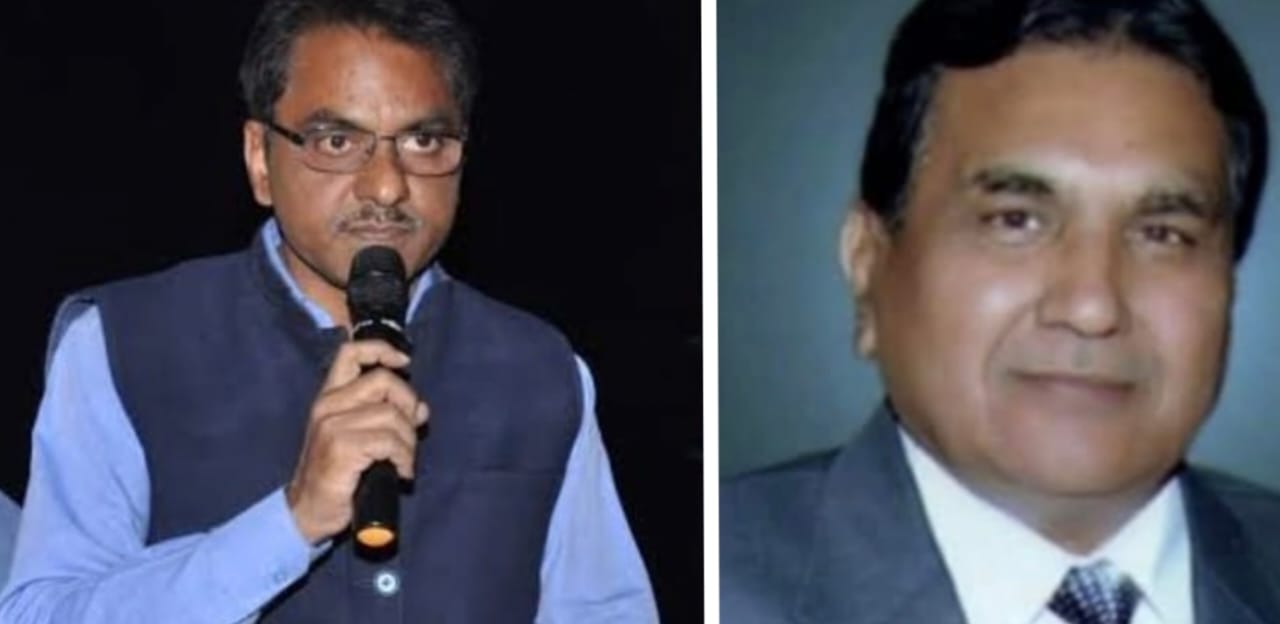
A detailed discussion was held with Shri Dinesh Kumar Mali, a renowned children's writer and critic from Talcher, Odisha, on the state, direction, and prospects of children's literature, as well as the challenges of literary criticism in this field. Several significant points emerged from this conversation, the most important being that in today's technological era, children's literature has undergone substantial transformation, and its critical evaluation has become an extremely challenging task. Writing for children and adolescents should be in a language that aligns with their level of understanding rather than reflecting the writer’s own linguistic preferences. Here, I present the interview in its original essence.
Shri Dinesh Kumar Mali highlights that evaluating children's literature is a highly complex endeavor because, over time, the critical mindset tends to move away from the innocence and tender emotions of childhood. This is one of the primary reasons why literary critics in India often shy away from working on children's literature, leading to the neglect of many talented children's writers. A decade ago, he wrote his first critical book on children's literature, "Dr. Vimla Bhandari Ki Rachna Dharmita," based on the works of Rajasthan’s famous children’s author, Dr. Vimla Bhandari. During that time, he deeply felt this dilemma, which has only intensified over the years.
Mali explains that analyzing children's literature raises several crucial questions. Can an adult accurately capture the thought patterns and imaginative waves in a child's mind? A child's mind is like a blank slate, capable of absorbing words from even the most complex languages of the world. Their cognitive structure allows them to learn effortlessly. He believes that these fundamental questions are best answered by children’s authors themselves.
Regarding children's literature, he describes it as an artistic domain filled with tender emotions, playful mischief, innocent babbling, spontaneous sulking and making up, joyous running, singing, dancing, and endless curiosity. Whether written by a child or an adult, it is still classified as "children’s literature" because the primary audience remains children. Although adults may sometimes enjoy children's literature to relive their childhood memories, that is not its primary purpose. Children’s literature delves deep into child psychology, and writers use their personal childhood experiences to shape their narratives according to time, setting, and characters. This creative process has existed for ages and continues unabated today.
Reflecting on the evolution of children’s literature, Mali notes that historically, mothers in rural and urban India alike used lullabies to put their children to sleep, a tradition dating back to mythological times. These lullabies, folk songs, and oral tales were the first forms of children's literature. Though their authors remain unknown, this oral tradition has been passed down through generations. As these stories began to be recorded, children's literature took on a new written form. The first stage of development was oral storytelling, followed by the printing press, and eventually, the vibrant world of modern children's books.
Speaking from experience, Mali finds that writing for children is more challenging than writing for adults. Expressing childlike emotions in simple yet engaging words is no easy feat. Moreover, a writer's emotional depth must reach a level of innocence and purity—qualities that are increasingly rare in today’s fast-paced world. As both authors’ mindsets and children's reading preferences are evolving, balancing the two is becoming increasingly difficult. This imbalance poses a significant threat to the future of children's literature.
To capture children's attention, books must use large, attractive fonts, high-quality pages, and vibrant illustrations. However, the cost of producing such books is exceptionally high, making them financially inaccessible for most children’s writers. Unless these books are published in large volumes or purchased in bulk by government institutions and libraries, both authors and publishers may find themselves distancing from children's literature.
Mali strongly believes that children's writers deserve appreciation and encouragement. It is equally important to conduct literary analyses of their works and produce critical books on children’s literature to ensure that these valuable contributions do not go unnoticed by literary scholars.
Regarding the primary objective of children's literature, Mali states that it should not only entertain young readers but also enhance their knowledge and creativity. He references the Panchatantra, a famous collection of fables, as an exemplary work that imparts moral and practical wisdom to children. These timeless stories offer valuable lessons about friendships, strategies, and problem-solving, leaving a lasting impact on young minds.
He observes that children aged 8 to 12 are particularly fond of folktales, fairy tales, animal fables, and adventure stories. Notable works in this category include Dadi Ka Matka (Sumitra Kumari Sinha), Prabhati (Shiv Mangal Singh ‘Suman’), Antyakshari (Bharat Bhushan Agarwal), Meri Gudiya Kuch Toh Bol (Dharmapal Shastri), Chacha Nehru Ke Geet (Nirankar Dev Sevak), and Mirch Ka Maza (Dinkar). Popular plays include Aao Bachon Natak Khelein (Anil Kumar), Paison Ka Ped (Kamleshwar), and Natkhat Nandu (Daya Shankar Mishra). He also mentions that authors like Nagarjun, Ilachandra Joshi, Amritlal Nagar, and Jainendra Kumar have compiled childhood stories filled with nostalgic charm.
For children aged 13 to 18, themes such as family, history, humor, animal tales, fairy tales, and “How-To-Do-It” books are particularly appealing. Mali fondly recalls the children's magazines of his youth, which played a crucial role in nurturing young minds.
In conclusion, he emphasizes that children’s literature must continuously evolve to stay relevant in the modern world. More literary critics need to focus on this genre to ensure that the remarkable works of children’s authors receive the recognition they deserve. Only then can children’s literature thrive and continue to inspire young readers for generations to come.